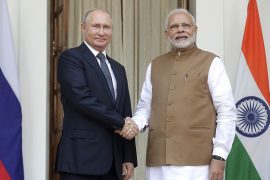It’s a telling analogy for the state of the strike in India, that when sanitation workers in East Delhi went on strike in January, 2017, residents observed that it hadn’t made much difference – garbage had always been piled up on their streets.
There are many strikes happening at any one time across India, but there’s one type of strike that has a stronger ring to its name – the Bharat Bandh, a call for the entire nation to shut down.
India has a proud history of shutting itself down on demand. Large scale movements were key to the freedom struggle, and famous ones like the Non-Cooperation Movement set a precedent for non-violent protest against the state. The state did not always respond peacefully.
Following independence, strikers found that the old methods of protesting against the British had to be employed against an Indian government – not always with peaceful consequences. The 1974 Railway Worker’s Strike led by George Fernandez was violently repressed by the Indira Gandhi government – with thousands arrested.
Copyright©Madras Courier, All Rights Reserved. You may share using our article tools. Please don't cut articles from madrascourier.com and redistribute by email, post to the web, mobile phone or social media.Please send in your feed back and comments to [email protected]











